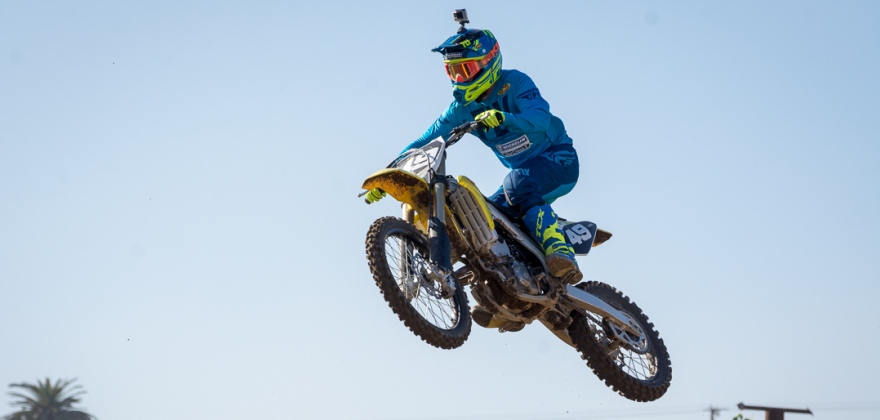Just like we did for the 450 MX Shootout we are bringing you a written version of our findings from the Rocky Mountain ATV/MC 2018 250 MX Shootout presented by Fly Racing.
Just like we did for the 450 MX Shootout we are bringing you a written version of our findings from the Rocky Mountain ATV/MC 2018 250 MX Shootout presented by Fly Racing.
We spent a long three days of testing all the machines and broke them down as best we could. We had over 15 different rider opinions that included a couple ladies as well (which we think is very important in this size classification). If you want to go back and listen to all three shows you can look for them here on pulpmx.com or go to keeferinctesting.com and click on the podcast tab. For you old school non-podcast humans out there I wanted to go over each bike’s ranking and what some positives and negatives were about each of those machines. We went to three vastly different types of tracks so we could really dive into each machine weaknesses and strengths. I do want to get across that each one of these bikes are a very capable machine that could be great for any type rider. Just a few little modifications could add up to a completely different type of machine that could work great for you. For example the Honda CRF250R was either on top of a rider’s pick or at the bottom of another. This is the testament to how close these bikes are and how each bike can be a great choice for any rider.
In our coverage of the 2018 250 MX Shootout we used an Olympic type of scoring system to get the overall results. Each day test riders would write down notes and rank each machine at the end of the test. There is a winner for each day, but after the final day, the scores were tallied (the lowest scores being the best) and an overall winner was crowned. The KTM 250SX-F won the first two days at Milestone in Riverside, California and Sunrise Cycle Park in Adelanto, California. The third day we went to Carson Mumford’s private sand track in the high desert of California and the Husqvarna FC250 took top honors there. However, once all the days scores were tallied, the KTM 250 SX-F was the winner in the inaugural Keefer Inc.Testing/Pulp MX 250 MX Shootout! Congratulations to everyone at KTM for building such a well rounded machine and great job by their R&D team.
After going over 15 riders notes, below is a compiled brief description of each machine and three positives and three negatives. I also wanted to incorporate one modification that I would want to make (or recommend) to do to each machine upon purchase (or shortly thereafter). Again, this is just an overview of some key points we dove into on each day’s podcast. So……If you haven’t experienced a shootout in a podcast format, do yourself a favor and listen to all the info that is available for you to hear. Sometimes it’s tough to really decipher a rider’s opinion through text/written form without hearing the test riders tone while they speak about it. That can’t be translated fully here on your computer screen or your phone and can only be translated through actually hearing their words and what they have to say. This is why I think this form of testing information is important to get out to you in a more organic, tailgate-talk type of way. If you’re in the market for a new 250 MX machine here are the rankings, some stand out qualities and some things that each bike needs help with.
Sixth Place: Suzuki RM-Z250
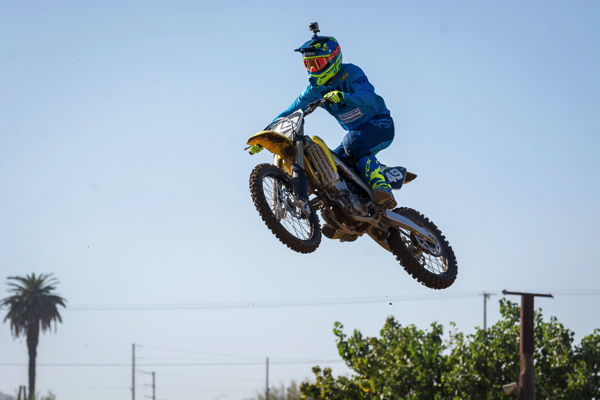 |
Suzuki didn’t change the RM-Z250 one bit as they focused their R&D efforts on the RM-Z450. The Suzuki for lack of a better word is slower than the other 250s in its class. The bottom end delivery is good on the zook, but once past those low rpm’s the yellow machine loses its luster. If you short shift the Suzuki, it can reward you, but it’s sheer lack of pulling power and top end makes it the bottom of the pecking order for most riders. The KYB PSF2 fork is not the most friendly on a rough track as it is difficult to set up and get a comfortable setting. Most riders said they wanted more hold up and then when they got that the fork was too harsh. Welcome to the air fork world folks! Suzuki was praised for its cornering ability and its easy to lay over style. However, some testers said that the Honda and Kawasaki may have passed the Suzuki in the king of cornering category. The lean coupler is still the best setting for overall horsepower and it it is also noted the the Suzuki feels dated when riding it. With some engine work and a re-valve the Suzuki can be a dangerous weapon in the right hands.
Positives:
- Shock has good comfort on acceleration bumps
- Snappy throttle response/bottom end delivery
- Slim Ergos
Negatives:
- Soft overall power feel (mid-top)
- Fork is difficult to set up and harsh on small bump
- MX52 tires leave rider searching for traction on hard pack (vague feel)
Recommended Modification: A high compression piston and and an aftermarket muffler system does this bike wonders. It wakes the bottom to mid up even more and lets it pull harder into the top end.
Tie/Fourth Place: Kawasaki KX250F
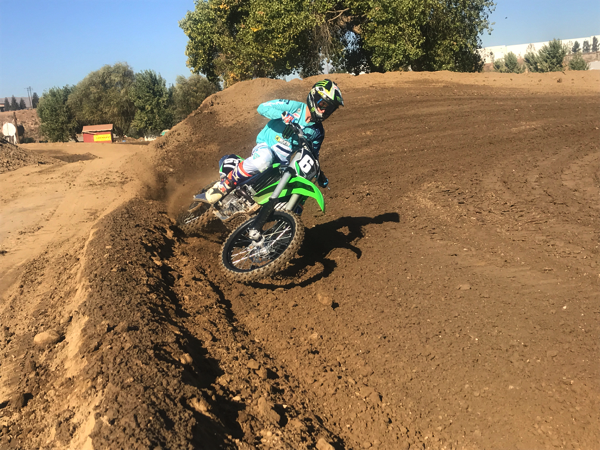 |
The Kawasaki KX250F received some changes to their engine for 2018 and you could feel those changes in the way of performance on the track. The KX250F did really good on the final day of the shootout at Mumford’s getting a second place and winning two test riders over on this day. Just like the KX450F the 250F frame has one of the best bump absorption characters in the group. When the track gets rough and hacked out, the frame of the Kawasaki flexes and gives the rider superb feel. The bad news is that the Showa SFF fork masks that great feeling with its harsh feel for most riders. Heavier riders didn’t notice it as much, but Kawasaki needs to get back on the double coil spring fork program to improve this machine. The engine has a snappy throttle response with a free feeling on de-cel without much engine braking. Once rolling on the throttle the power is not as strong as the KTM or Husqvarna, but still creates a lightweight feeling on the track. The KX250F feels light through corners, but the Kawasaki still feels long. Most riders thought the green machine is a more neutral turning bike and not the rear wheel biased machine it was a couple years ago. If it wasn’t for the harsh feeling fork and a little more top end/over-rev this bike could be in the top three very easily. In fact if my opinion/ranking was involved in this shootout I would have put it third!
Positives:
- Frame bump absorption
- Snappy throttle response
- Feels light through corners
Negatives:
- Fork is tough to dial in and harsh through mid-stroke
- No electric start
- Lack of top end/over-rev
Recommended Modification: If you can get a Kawasaki FI tool to re-map your KX250F, it really does make it a drastically better machine. We put one of the Kawasaki technicians maps inside of our test bikes and it makes the KX250F pull longer from mid-top (something this bikes needed). Pro Circuit also has a great setting for the Showa SFF fork that helps mid stroke comfort.
Tie/Fourth Place: Honda CRF250R
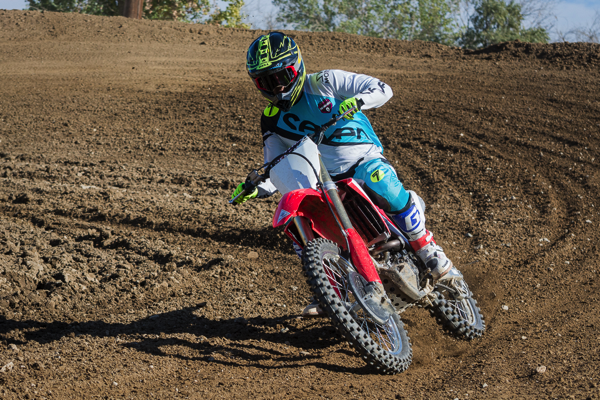 |
The Honda was the most anticipated 250 for 2018 with an all new machine with a dual overhead cam, dual headpipes, electric start, updated frame and spring forks! What was interesting when going back to listen to the shootout was that it either won or was ranked further down in the riders rankings. The engine is lacking some torque than the Yamaha, KTM, Kawasaki and Husqvarna has. Once you get passed the empty bottom end feeling however the Honda absolutely rips. It pulls hard through the mid-top end and revs out farther (on paper) than any other machine in its class. Aggressive riders loved this type of engine character while other heavier/lazier riders wanted more torque. Even though the Honda is one of the heavier bikes in the shootout on the scales, it still feels agile when cornering or whipping the machine. The suspension rivals the Yamaha’s for class leading comfort and most every rider praised how well the suspension worked on the track. The Honda likes to run a sag measurement of 108mm as this helps straight line stability when the track gets choppy. When we ran the rear end higher the CRF250R got a little oversteer through mid-corner, so make sure to really pay attention to sag settings.
Positives:
- Top end pulling power with tons of over-rev
- Balanced suspension
- Ergonomics. Every rider loved the way the Honda felt when riding.
Negatives:
- Empty/soft feeling bottom end pull
- Must be ridden aggressively
- Slight twitchy feeling if sag is not paid attention to closely
Recommended Modification: Just like the Suzuki the Honda could benefit from slightly more compression and a muffler. I have already ridden a slightly modified version of the Honda and it actually has some torque now! Honda will be making a cam for the new 250R that will also be developed in house so you know it will be good.
Third Place: Yamaha YZ250F
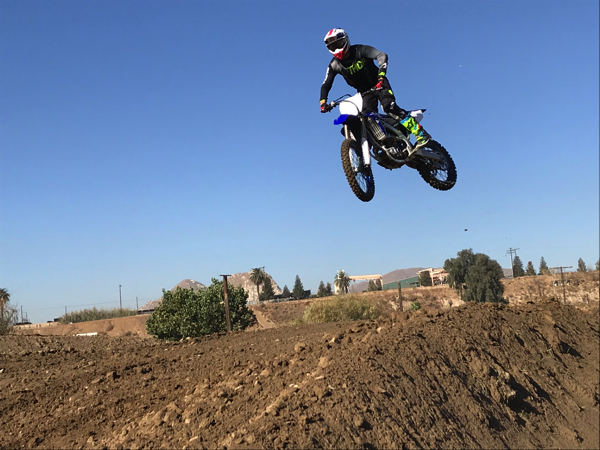 |
The Yamaha YZ250F didn’t change for 2018 as Yamaha made all the changes to the 450F. The YZ250F has incredible amounts of excitement down low and more torque than any other bike in class. Pulling power through the mid-range is also as good as the KTM and Husqvarna, but starts to lose ground once into the top end and over-rev. The orange and white bikes pull stronger in those departments, but if you short shift the Yamaha it will pull a taller gear without any trouble. Most vet riders and testers who normally ride 450’s loved this engine character. Faster pros wanted more from the Yamaha’s top end. The YZ250F will corner well if your technique is good. If you have bad technique in corners then the Honda or Suzuki will be your best choice. The fork and shock on the Yamaha won the suspension category almost everyday and most every test rider said that they loved the suspension, especially when the track turned for the worse. This is when you can appreciate the suspension and chassis of the blue machine. It lacks an electric start (2019 YZ250F should have one) and some riders felt it was wide in the shroud area, but the pure excitement of this engine makes it a tough bike not to purchase.
Positives:
- Exciting bottom end and torque feel
- Best suspension in class
- Durability
Negatives:
- Lacks over-rev compared to the top two
- Flat corners has slightly less of a planted feel
- Wide shroud area fro some riders
Recommended Modification: A Vortex ignition. This is going to sound expensive (and it is at around 600 bucks), but this was the single best modification that I have made to the YZ250F. It lets the YZ250F pull longer on top end and rev out further while keeping the fun exciting low end feeling.
Second Place: Husqvarna FC250
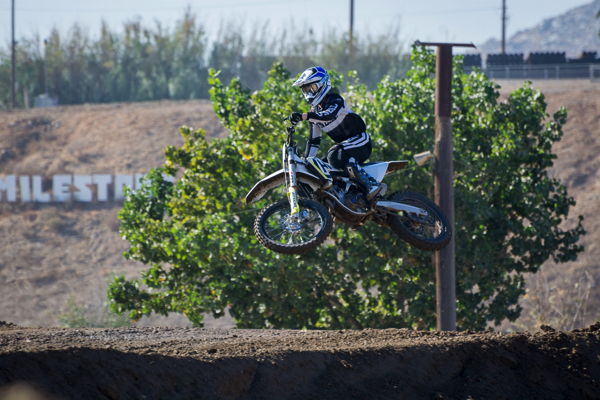 |
The Husqvarna FC250 came oh so close to wining this whole thing! It is such an easy bike to ride and gives you confidence in its ability to give you maximum traction at any track. The FC250 surprisingly hits harder than the KTM and has more rpm response, which makes it feel slightly lighter than the orange version. Testers loved the engine and its buttery smooth, yet exciting pulling power out of corners. It’s almost deceiving because the Yamaha has more “crack” at initial throttle so you might think you are popping out of corners quicker. However, the Husqvarna doesn’t wheelie out of corners and sticks to the ground while pushing you forward in a quicker manner than any other bike in the shootout. The Husky’s suspension is what held it back from winning this year. Although both the Husky and KTM have the best air fork in today’s motocross realm, it still doesn’t give the predictability over a long day of riding as much as the spring forks in the shootout. The spring fork also gives the rider slightly more front end traction (mid corner) and that seemed to be very important to some riders in this year’s shootout. The Husqvarna is light, but on the track the FC250 corners excellent and the lack of weight) is really felt when you need to cut down early from a corner or scrub a jump. This is where the Husky shines and is superior from others. The KTM and Husqvarna have the best brakes in the shootout, but be forewarned if you never experienced a Brembo set up. It can be too grabby at times so make sure to get used to the feel at first. The “Traction Control” option is cool and actually works, so don’t be scared to push that button on hard pack days. The action of the Magura clutch is not as good as the KTM’s Brembo hydraulic unit, but still is very good.
Positives:
- Easy to ride, smooth yet exciting engine character
- Lightweight chassis feel
- Rear wheel traction (connected to throttle hand)
Negatives:
- Harsh feeling mid stroke at rough tracks
- Fluctuation of fork feeling throughout day at track
- Bike looks hammered too quickly
Recommended Modification: This bike doesn’t need much, but I would get the suspension re-valved to get more comfort out of it when the track is hacked out. WP Factory Services does a great job at setting your bike up and making the Husqvarna a more balanced, comfortable machine.
First Place: KTM 250 SX-F
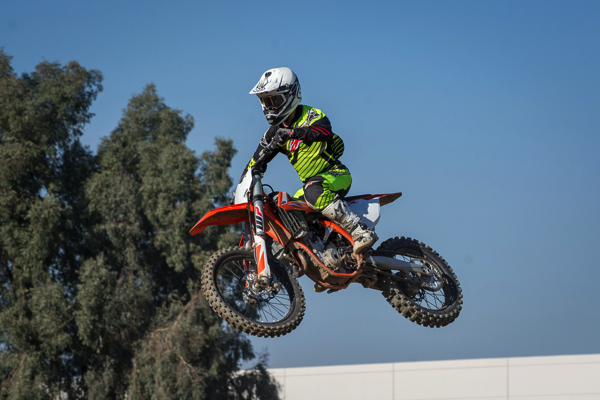 |
What separated the KTM and Husqvarna this year was the rear end compliancy on rougher type tracks. Most testers didn’t know that the swingarms between the two were different, but the KTM swingarm has a slightly different shape (on the inside of swingarm) and a softer (more flex) feel. The KTM didn’t feel like it had quite the bottom end snap the Husky had, but most testers said it had a little more top end pull. Rear wheel traction is always at an optimal level and accelerating out of a corner the orange machine stays straight and hooked up. The fork between the Husky and KTM feel almost identical and 10.6-10.7 bars was a good base setting for most riders. 103-105mm of sag gave the KTM a balanced feel and let the rider start his corner early, which helped lean the orange brigade over nicely through flat corners. The lightweight feel of the KTM has to be mentioned because it doesn’t those “out of shape” riders as tired as other bikes in class.
Positives:
- Strong mid-top end pulling power that creates an exciting feel
- Rear wheel traction
- Lightweight feeling
Negatives:
- Fork has harsh feeling mid-stroke
- Handlebar feels slightly more rigid than Pro Taper bar on Husky
- Shock had soft feeling on end stroke (high speed compression)
Recommended Modification: This is going to be cheap and easy. Go to a Pro Taper handlebar or a Rental FatBar. The Neken handlebar that is on the KTM is rigid and hurts the wrists on slap down landings. I also like going to standard non lock on grips as they are not as rigid as well. You can also do the same thing to the suspension re-valve as I recommended with the Husky.

